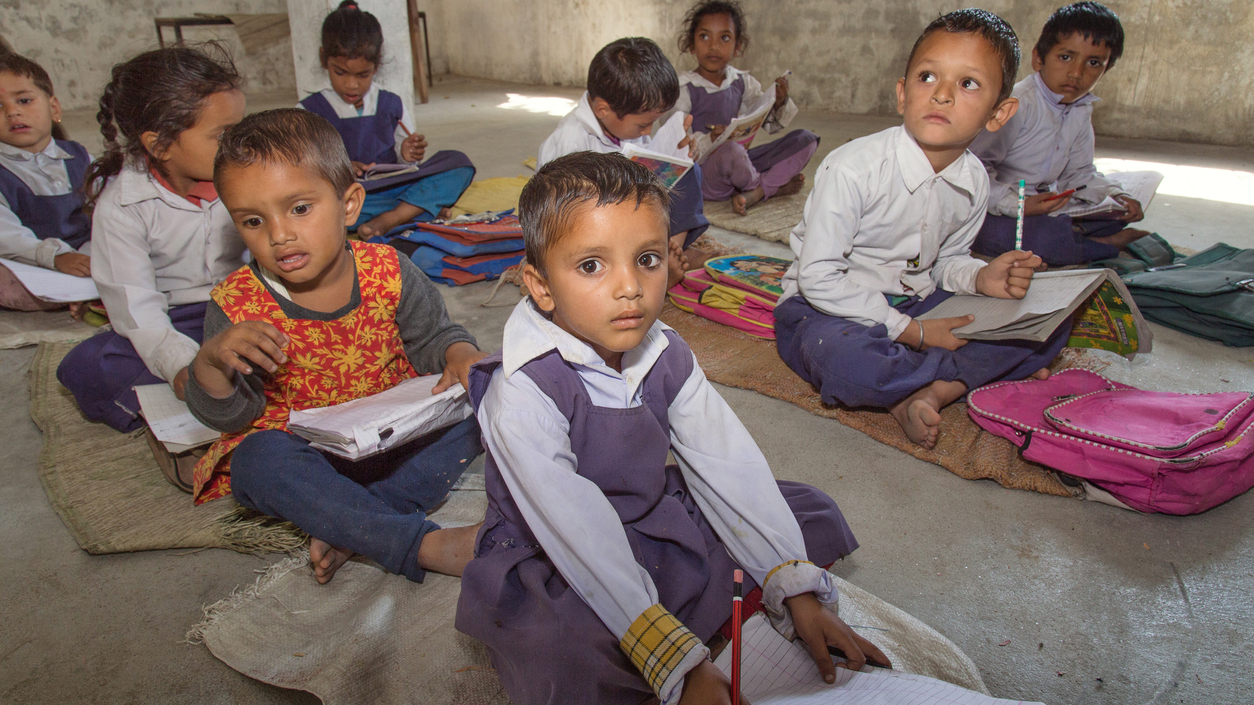More than half of students aged between 14 and 16 years covered by a survey in rural India cannot calculate the number of hours between 10.30pm and 5.30am.
An annual exercise by non-government organisation Pratham has found marginal improvements in reading and arithmetic over previous years among children from Classes III to V, while students of Class VIII have shown little change in performance.
The Annual Status of Education Report (ASER) Rural 2018 was released on Tuesday, based on a survey that covered 5,46,527 children in the age group of 3-16 years from 3,54,944 rural households in 596 districts.
The survey asked four specific questions requiring application of arithmetic skills to 62,245 children in the age group of 14-16 years. Over half of them failed to answer the questions that a Class VI student is equipped to answer (see chart).
One question was about calculating the number of hours between 10.30pm and 5.30am, which requires simple subtraction skills.
The report has categorised the respondents into those who know subtraction but not division and those who know both subtraction and division.
Nearly one-thirds of the children who knew only subtraction but not division answered the question successfully, while 47 per cent of those who knew both subtraction and division answered it correctly. Among both sets of respondents, girls were lagging behind boys.
“Many of the children might have learnt the numerical calculations but would have faced difficulty in applying it because of lack of exposure. Girls are more likely to get less exposure than boys,” said Rukmini Banerji, chief executive officer of Pratham.
The report found enrolment in private schools to have increased between 2006 and 2014 to around 30 per cent of all admissions and have plateaued since. The percentage of children of Class III who could read text of Class II had increased from 25.1 per cent in 2016 to 27.2 per cent in 2018.
The percentage of Class V children who could do division inched up from 26 per cent in 2016 to 27.8 per cent in 2018.
However, there is not much change in the performance of students of Class VIII. Around 44 per cent of such students could solve three-digit by one-digit division.
Prof. R. Govinda, former vice-chancellor of the National Institute of Educational Planning and Administration, said the overall performance remained poor across schools, no matter private or government.
“There is not much change in the overall picture. Strong political will is required to engage on this sector,” Govinda said.
Banerji attributed the marginal improvement to discussions over learning outcome following reports by the NCERT and the ASER.
“The findings of the NCERT and ASER surveys on learning outcome have created a debate in the country. Parents are also more conscious. Some states have taken some measures. That has created some improvement,” Banerji said.
Questions asked
Q1: If a girl goes to sleep at 10.30pm and wakes up at 5.30am, for how many hours does she sleep?
Q2: If 3 tablets are needed to purify 15 litres of water, how many tablets are needed to purify 40 litres of water?
Q3: 5 books are available in two shops in a market. If you have to buy all 5 books, what is the least amount of money you would have to spend? (Shop 1 has a special offer of 5 books for Rs 299 and Shop 2 gives a flat rate for each book: Science Rs 80, math Rs 30, Hindi Rs 70, English Rs 60 and history Rs 40)
Q4: A T-shirt is priced Rs 200. If a discount of 10% is offered, how much would you need to spend?

Source: Annual Status of Education Report (Rural) 2018










